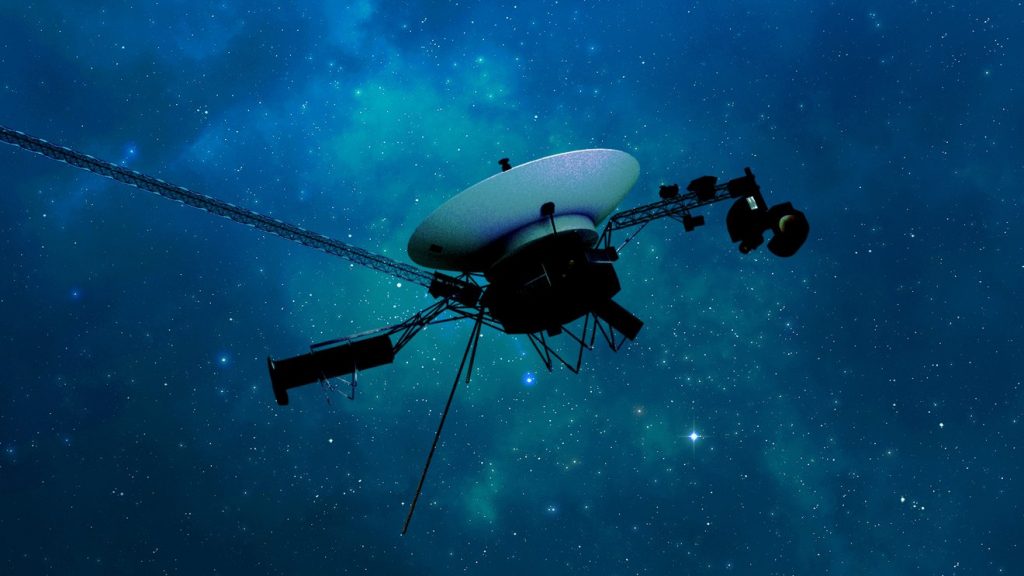Iowa scientist thrilled NASA regains link with distant Voyager spacecraft
April 25th, 2024 by Ric Hanson
(Radio Iowa) – A research scientist in the Physics and Astronomy Department at the University of Iowa is delighted NASA engineers were able to reestablish communication with the Voyager One spacecraft, which has flown further into space than any human-made object. Bill Kurth says Voyager, which he started working on at the U-I five decades ago, is now 15-BILLION miles from Earth. “That’s 165 times farther from the sun than we are,” Kurth says. “It’s 22-and-a-half hours ‘light time’ from Earth. That means if we send a signal to Voyager it takes almost a day to get to Voyager and if Voyager responds, it takes almost another day for it to come back.”
Voyager One and its twin, Voyager Two, were launched in 1977 and are now well beyond the edge of our solar system. This past November, Voyager One went silent after a memory chip in one of its three onboard computers failed. A few days ago, the team at NASA’s Jet Propulsion Laboratory was able to restore the spacecraft and regain the ability to receive and transmit messages over the incredibly great distance. “The team at JPL has worked miracles over the decades,” Kurth says. “They’ve basically pulled both of these spacecraft out of the fire a number of times and I was not terribly surprised that they could do it again.”
Despite its aging electronics, Kurth says Voyager is still sending back information that’s vitally important to researchers who are trying to understand the fabric of our universe. “We’re now in a region of space that no instrument or spacecraft from Earth has ever been. It’s in what we call the ‘interstellar medium.’ That’s the stuff between the stars,” Kurth says. “We’re outside of the extended sun’s atmosphere for the first time and we’re making measurements of that medium.” Kurth started working on Voyager as a U-I graduate student in 1974. He’s now the principal investigator for the plasma wave science instrument on the spacecraft, which was designed and built at Iowa.

NASA’s Voyager 1 spacecraft is depicted in this artist’s concept traveling through interstellar space, or the space between stars, which it entered in 2012.
Credit: NASA/JPL-Caltech
When the Voyagers were launched, they were designed to visit the planets Jupiter and Saturn, and perhaps be able to go on to Uranus and Neptune. “After the Neptune flyby, the spacecraft were in good health and NASA decided to rename the mission the Voyager Interstellar Mission with the hopes that someday, it would get into the interstellar medium. And it has,” Kurth says. “It took a long cruise to get there and I’m just very happy to have been part of that.”
Much like the Mars rovers that far exceeded their original lifespans, Voyager One is expected to continue soaring into deep space, and NASA says its generators may continue to have power to run its instruments through 2036.





